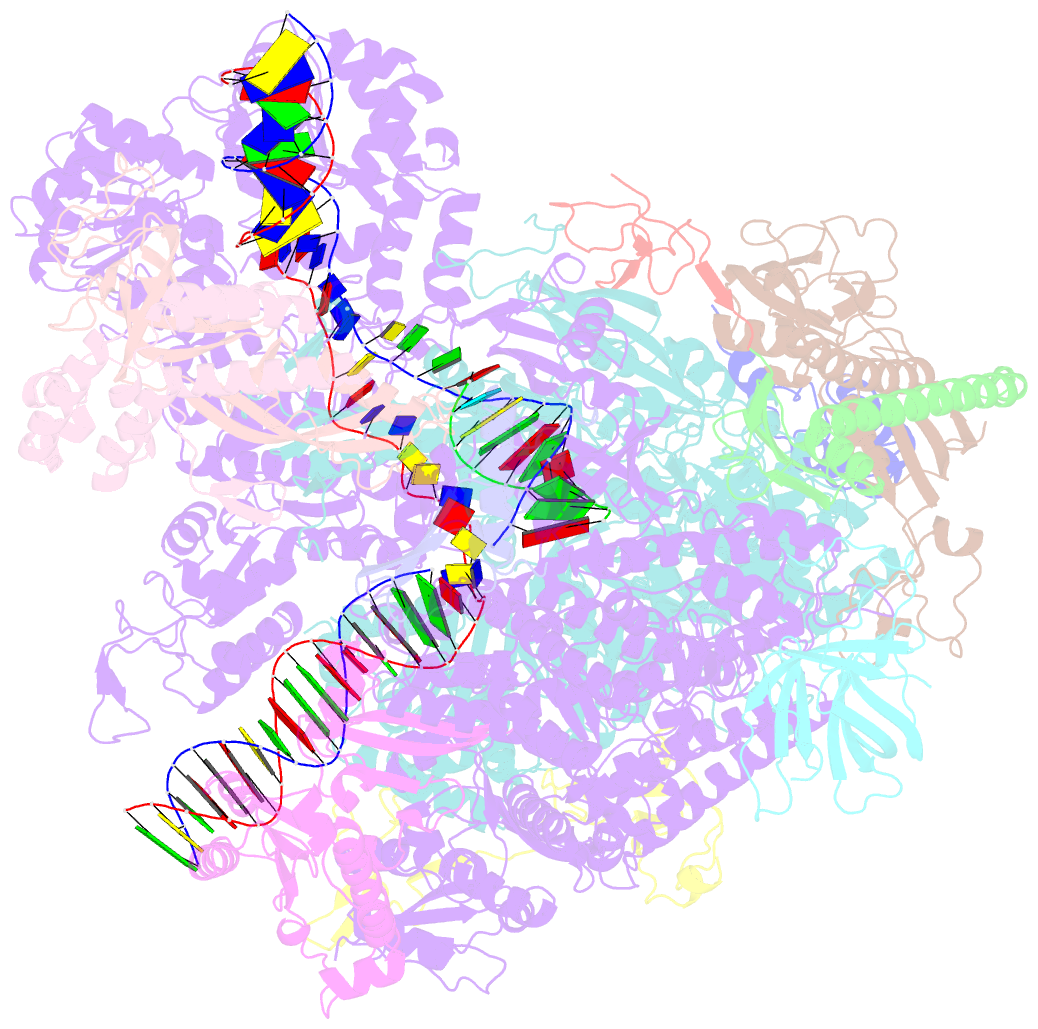Summary information and primary citation
- PDB-id
- 8tvp; SNAP-derived features in text and JSON formats;
DNAproDB
- Class
- transcription-DNA-RNA
- Method
- cryo-EM (3.7 Å)
- Summary
- cryo-EM structure of cpd-stalled pol ii in complex with rad26 (open state)
- Reference
- Sarsam RD, Xu J, Lahiri I, Gong W, Li Q, Oh J, Zhou Z, Hou P, Chong J, Hao N, Li S, Wang D, Leschziner AE (2024): "Elf1 promotes Rad26's interaction with lesion-arrested Pol II for transcription-coupled repair." Proc.Natl.Acad.Sci.USA, 121, e2314245121. doi: 10.1073/pnas.2314245121.
- Abstract
- Transcription-coupled nucleotide excision repair (TC-NER) is a highly conserved DNA repair pathway that removes bulky lesions in the transcribed genome. Cockayne syndrome B protein (CSB), or its yeast ortholog Rad26, has been known for decades to play important roles in the lesion-recognition steps of TC-NER. Another conserved protein ELOF1, or its yeast ortholog Elf1, was recently identified as a core transcription-coupled repair factor. How Rad26 distinguishes between RNA polymerase II (Pol II) stalled at a DNA lesion or other obstacles and what role Elf1 plays in this process remains unknown. Here, we present cryo-EM structures of Pol II-Rad26 complexes stalled at different obstacles that show that Rad26 uses a common mechanism to recognize a stalled Pol II, with additional interactions when Pol II is arrested at a lesion. A cryo-EM structure of lesion-arrested Pol II-Rad26 bound to Elf1 revealed that Elf1 induces further interactions between Rad26 and a lesion-arrested Pol II. Biochemical and genetic data support the importance of the interplay between Elf1 and Rad26 in TC-NER initiation. Together, our results provide important mechanistic insights into how two conserved transcription-coupled repair factors, Rad26/CSB and Elf1/ELOF1, work together at the initial lesion recognition steps of transcription-coupled repair.





